Looking Up, 16-page English PDF Edition, Back Issues and Current Issue
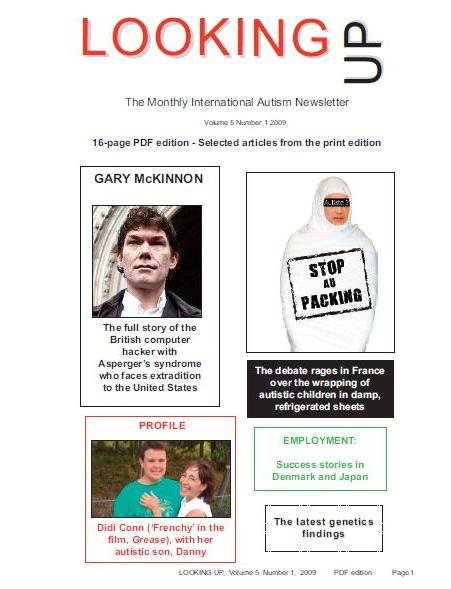
|
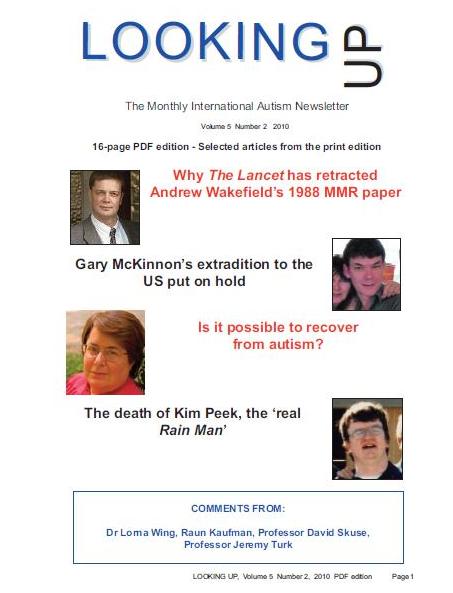
|
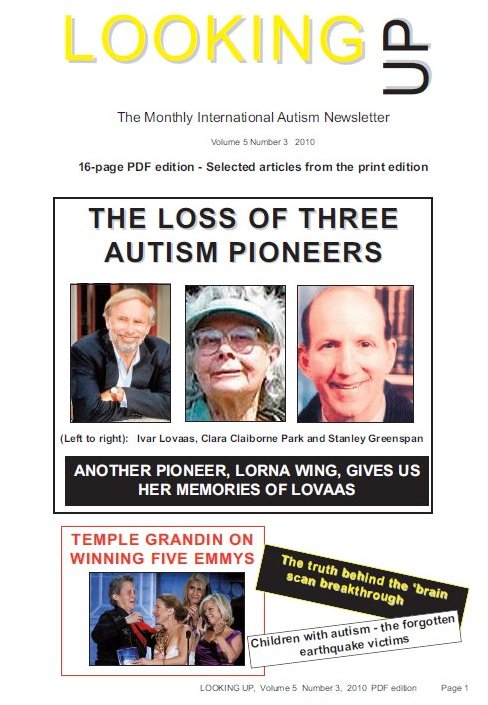
|
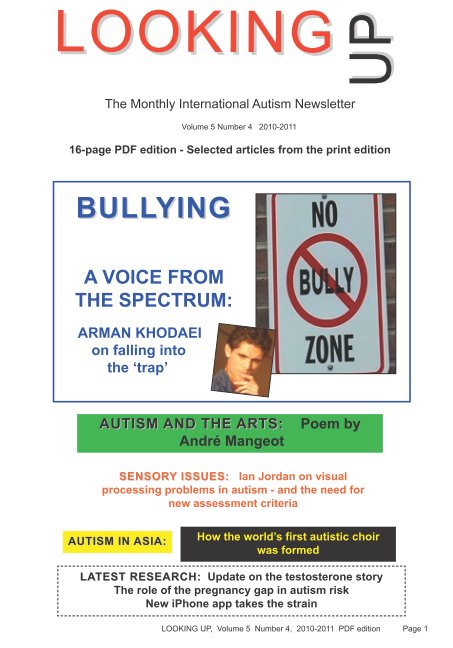
|
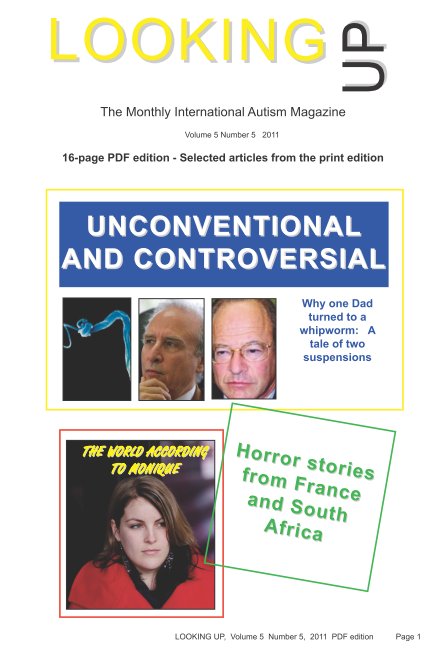
|
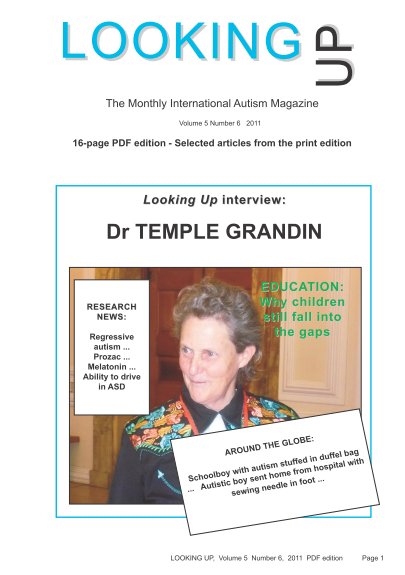
|
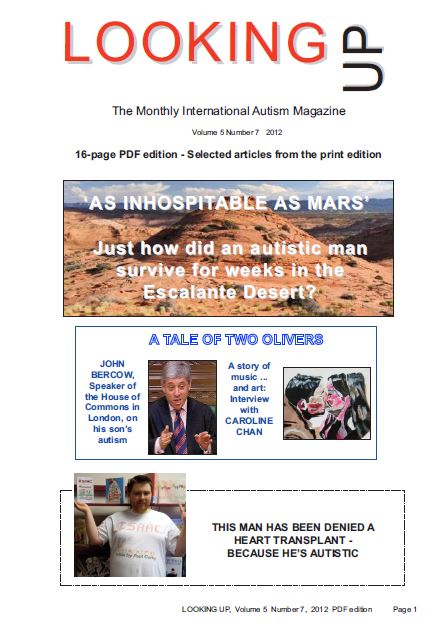
|
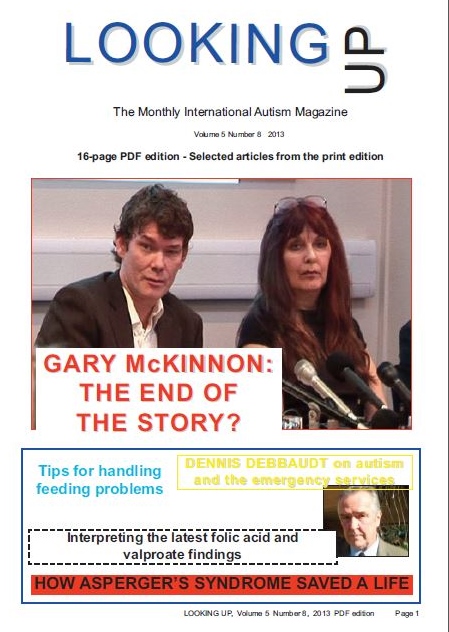
|
| Home page | Subscribe (print edition) | Selected articles | Our publications | Our mailing lists |
| PDF edition | Subscribe (PDF edition) | Back issue contents | Autism books | Contact us |
From Volume 3 Number 6
Dr
ERIC COURCHESNE, of the University of California, is a leading expert
on the
neurobiological aspects of autism. At the first session of the
inaugural World
Autism Congress in Melbourne on November 11, 2002, he presented the
findings of
his latest study revealing brain overgrowth in infants later diagnosed
with
autism. Adam Feinstein talked to him in Melbourne
ADAM
FEINSTEIN: I was fascinated by your brain growth research, which you
presented
here in Melbourne, and particularly excited by the idea of a possible
tie-in
with Karin Nelson’s discovery in 2000 of four specific proteins -
including
brain-derived neurotrophic factor, which stimulates new growth - in the blood of children in California who
were later diagnosed with autism. In your talk, you called autism a
“transient
post-natal encephalopathy.” Does the fact that you use the term
“post-natal”
negate research like the thalidomide study of Patricia Rodier
indicating damage
to the foetus in early pregnancy?
ERIC COURCHESNE: No - they could both co-exist. The idea of “post-natal” has to do with the macro-encephalopathy. The phenomenon of pathological overgrowth of the brain is taking place after birth, in the first year of life in children with autism. So that is why I call it post-natal. It is transient, because the overgrowth occurs for only a short period of time, leading the brain to be larger than normal for only about three to five years. At that point, the growth tends to stop and the normal brain catches up and surpasses it. There is still a very interesting question about what is happening pre-natally. There is a good possibility that whatever is triggering the post-natal overgrowth might have some connection to what is happening pre-natally. I think this is a very important question: whether pre-natal events are setting up this post-natal phenomenon?
ADAM
FEINSTEIN: One or two people have come
up to me at this congress and said: “Two
months, four months, six months” (the timing of the beginning of the
overgrowth
in the brain) - what about vaccines, some of which are administered at
these
stages? What’s your view on this idea?
ERIC COURCHESNE: Well, there’s always someone who wants to put the blame on vaccines. First it was the MMR - but quite clearly, if this pathological overgrowth of the brain begins before the MMR vaccine is given, it cannot be implicated. So now people are interested in the earlier vaccines. I think that this is reaching for something without asking: where is the evidence? We really need some serious, sober science to be done looking at the possible triggers for the overgrowth. We should not come to any conclusion too rapidly as to what these triggers might be.
ADAM
FEINSTEIN: What about the cases of
so-called “regressive autism,” like my son, who start to speak, then
lose
language and other skills? I think, in fact, that my son was autistic
from
birth, anyway, because he was using non-social language. But could your
research still apply in these cases?
ERIC COURCHESNE: Yes. I actually believe that one possibility is that, as the brain grows too large, it is growing more and more abnormalities in its circuits in more and more locations, until it finally reaches a level of such disorganisation that it cannot support previously acquired behavioural functions. Then you have the loss of these functions.
ADAM
FEINSTEIN: So that might explain the
mysterious loss of language in many children with autism?
ERIC COURCHESNE: It might be what is happening. I think it’s too early to know for sure. It is clearly an extremely important area of research.
ADAM
FEINSTEIN: Could you describe the
precise therapeutic use to which your findings could lead, potentially?
ERIC COURCHESNE: To begin with, if our study is replicated and found to be consistently true, then it may become a useful early warning of possible autism. That, in turn, allows the development of additional tests to verify the possible diagnosis of autism. It opens up the opportunity for a whole new realm of treatments at a much earlier stage.
ADAM
FEINSTEIN: In your talk, you spoke of
the simple method of a tape-measure around the head of very young
children?
ERIC COURCHESNE: Yes. This might turn out to be an amazingly useful tool in the early identification of children who are potentially at risk from autism. Once again, I have to emphasise that we must verify that this is true.
ADAM
FEINSTEIN: Are there more studies in the
pipeline?
ERIC COURCHESNE: We are currently doing one. We hope that other people will do the same. We caution those doing replications that they have to be conducted with great care. Firstly, children have to be diagnosed using the most rigorous contemporary research standards for diagnosis of autism. After all, that is what we did. If people are looking at individuals as young as two or three years of age, a firm diagnosis of autism is not really possible. Studies have shown that, with children who have autistic characteristics at the age of two or three, when followed up and looked at when they’re five or six years old, only about 70 per cent retain the diagnosis of autism. So if people set out to try to repeat the study looking at two- or three-year-olds, and then do the head circumference measures, they could end up with a mixture of autistic and non-autistic patients and fail to replicate because they are not studying autism per se.
ADAM
FEINSTEIN: How does your research
possibly link up with other brain studies like that on mini-columns by
Dr
Manuel Casanova in Atlanta, Georgia?
ERIC COURCHESNE: It’s very exciting. What Casanova found was that, in autism, the brain is developing too many mini-columns too rapidly and these are nor really developing maturely. Of course, he is looking at the adult brain. There’s a lot of water that passes under the bridge between 12 months and 30 years of age. So to try to make a direct connection will require a lot more research. But in principle, it fits.
ADAM
FEINSTEIN: Do you share the optimism of
Nancy Minshew at the University of Pittsburgh, who has also been doing
research
on brain size in autistic individuals? She said recently: “The hunt is
on for a
cure for autism. This will be found in the lifetime of children born
today -
not in mine but in theirs - if research like this continues its course.”
ERIC COURCHESNE: I’m very optimistic that, in the the span of five to seven years, researchers will have discovered major factors involved in this brain overgrowth, and once they do, I believe research will proceed at a tremendously fast pace.

|

|

|

|

|

|

|

|
| Current 40-page print edition issue | |||||||||||||||
|---|---|---|---|---|---|---|---|---|---|---|---|---|---|---|---|
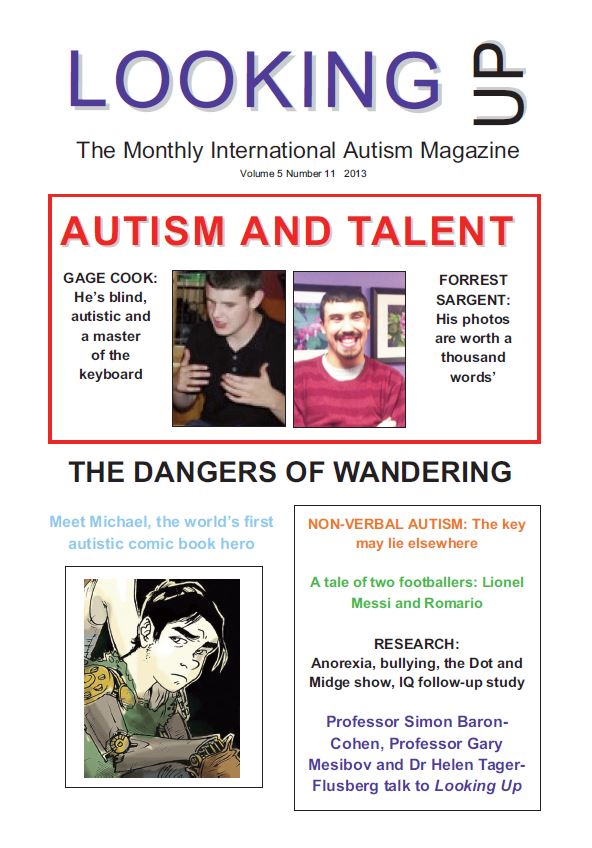
|
| ||||||||||||||
| PRINT EDITION BACK ISSUE CONTENTS AND FRONT COVERS | ||||||||||||||||||||||||||
|---|---|---|---|---|---|---|---|---|---|---|---|---|---|---|---|---|---|---|---|---|---|---|---|---|---|---|
| VOLUME 1, Number: | 1 | 2 | 3 | 4 | 5 | 6 | 7 | 8 | 9 | 10 | 11 | 12 | VOLUME 2, Number: | 1 | 2 | 3 | 4 | 5 | 6 | 7 | 8 | 9 | 10 | 11 | 12 | |
| VOLUME 3, Number: | 1 | 2 | 3 | 4 | 5 | 6 | 7 | 8 | 9 | 10 | 11 | 12 | VOLUME 4, Number: | 1 | 2 | 3 | 4 | 5 | 6 | 7 | 8 | 9 | 10 | 11 | 12 | |
| VOLUME 5, Number: | 1 | 2 | 3 | 4 | 5 | 6 | 7 | 8 | ||||||||||||||||||
| You can find our PDF EDITION CONTENTS AND COVERS on our PDF EDITION BACK ISSUES PAGE | ||||||||||||||||||||||||||
| Home page | Subscribe (print edition) | Selected articles | Our publications | Our mailing lists |
| PDF edition | Subscribe (PDF edition) | Back issue contents | Autism books | Contact us |